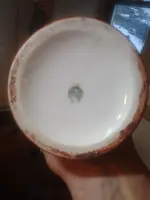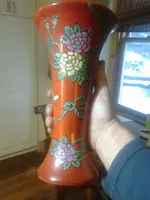Some history: Nippon porcelain refers to vases, teapots, wall plaques, humidors, and other ceramic objects stamped with the word 'Nippon' on their bases. The practice began in 1891 in response to the U.S. McKinley Tariff Act, which forbade the import of items that weren’t “plainly marked, stamped, branded, or labeled in legible English words.” Nippon is the English spelling of a pronunciation of what Americans call Japan, but in 1921, the word was ruled Japanese in origin, so Nippon was no longer accepted by U.S. Customs Agents. From then on, imported Japanese china was stamped Japan. Today, Nippon-marked porcelain tends to have a higher value than pieces marked Japan, which means collectors should be wary—demand for Nippon porcelain has created a market for pieces with fake transfer-based marks.
TJE: For $10, you got a great deal !!
Don...







